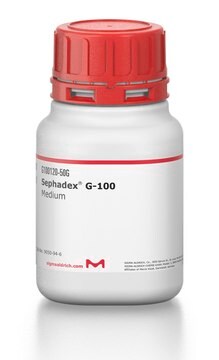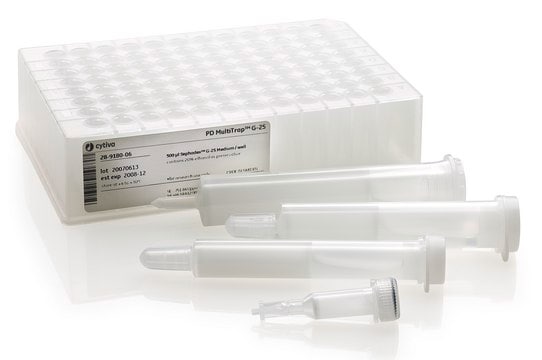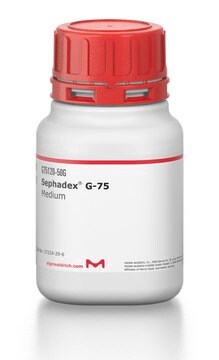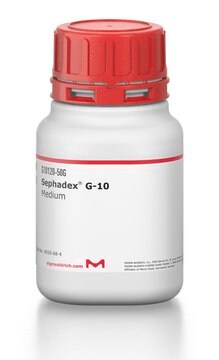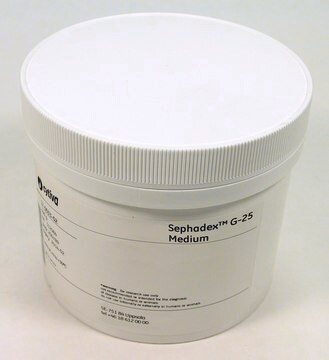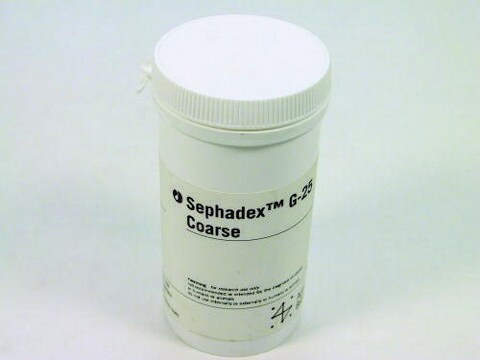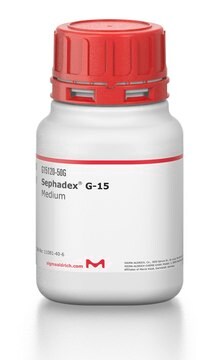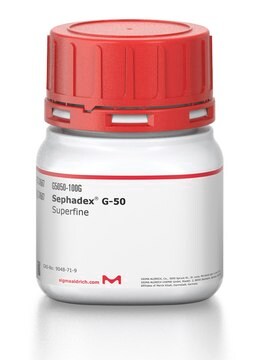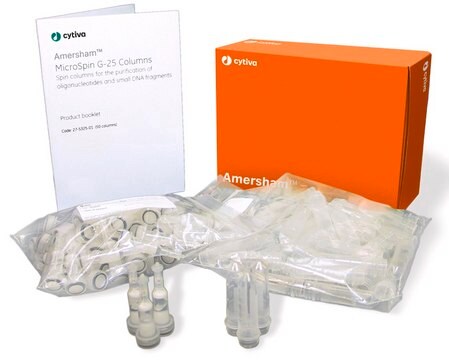S5772
Sephadex® G-25
BioReagent, for molecular biology, DNA grade, Superfine
About This Item
Prodotti consigliati
Grado
DNA grade
for molecular biology
Livello qualitativo
Nome Commerciale
BioReagent
Forma fisica
beads
tecniche
buffer exchange: suitable
Gruppo funzionale matrice
phase
Diametro delle microsfere
20-50 μm
Dimensione pori
exclusion limit (10 bp dsDNA; (rA)10)
Intervallo di pH
2-13
applicazioni
life science and biopharma
Compatibilità
Cytiva
Attività estranea
DNase, RNase, none detected
Temperatura di conservazione
room temp
InChI
1S/C6H12O6.C3H8O3/c7-1-2-3(8)4(9)5(10)6(11)12-2;4-1-3(6)2-5/h2-11H,1H2;3-6H,1-2H2/t2-,3-,4-,5-,6-;/m1./s1
BCPVZFFJGCURNR-OCOFDJSDSA-N
Cerchi prodotti simili? Visita Guida al confronto tra prodotti
Descrizione generale
Applicazioni
Caratteristiche e vantaggi
- Excellent recovery
- Minimal sample dilution
- Quick and easy to use
Note legali
Prodotti correlati
Codice della classe di stoccaggio
11 - Combustible Solids
Classe di pericolosità dell'acqua (WGK)
WGK 3
Punto d’infiammabilità (°F)
Not applicable
Punto d’infiammabilità (°C)
Not applicable
Dispositivi di protezione individuale
Eyeshields, Gloves, type N95 (US)
Certificati d'analisi (COA)
Cerca il Certificati d'analisi (COA) digitando il numero di lotto/batch corrispondente. I numeri di lotto o di batch sono stampati sull'etichetta dei prodotti dopo la parola ‘Lotto’ o ‘Batch’.
Possiedi già questo prodotto?
I documenti relativi ai prodotti acquistati recentemente sono disponibili nell’Archivio dei documenti.
I clienti hanno visto anche
Il team dei nostri ricercatori vanta grande esperienza in tutte le aree della ricerca quali Life Science, scienza dei materiali, sintesi chimica, cromatografia, discipline analitiche, ecc..
Contatta l'Assistenza Tecnica.



